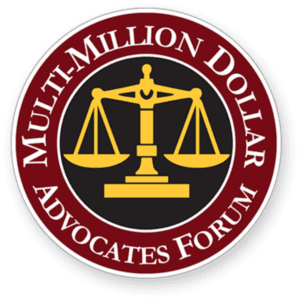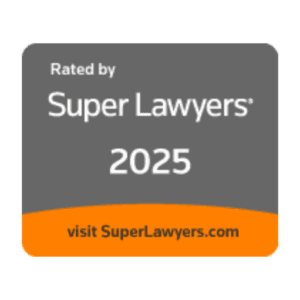A Comprehensive Guide to Federal Motor Carrier Safety Regulations
Understanding FMCSR’s: The Foundation of Commercial Vehicle Safety
FMCSR refers to the Federal Motor Carrier Safety Regulations, the comprehensive set of rules governing commercial motor vehicles (CMVs) operating on America’s roadways. These regulations represent the federal government’s efforts to reduce crashes, injuries, and fatalities involving large trucks and buses.
Established and enforced by the Federal Motor Carrier Safety Administration (FMCSA) (FMCSA), the FMCSRs create a safety framework that touches every aspect of commercial transportation. From the qualifications of drivers behind the wheel to the mechanical condition of the vehicles themselves, these regulations establish minimum safety standards that all motor carriers must meet.
In this comprehensive guide, we’ll explore what FMCSR means for transportation safety, how these regulations are structured, and why understanding them is crucial for everyone from motor carriers and drivers to safety advocates and accident victims.
The Legal Framework: Where to Find FMCSR
The Federal Motor Carrier Safety Regulations are codified in Title 49 of the Code of Federal Regulations (CFR), specifically in Parts 300-399. This placement within federal regulatory code underscores their importance in national transportation policy.
The FMCSA, operating under the U.S. Department of Transportation, maintains and updates these regulations based on ongoing research, technological advancements, and safety data analysis. While the regulations themselves are federally mandated, many states adopt identical or similar provisions for intrastate commerce, creating a relatively uniform safety standard across the country.
Key sections of the FMCSRs include:
- Part 382: Controlled Substances and Alcohol Use and Testing
- Part 383: Commercial Driver’s License Standards
- Part 385: Safety Fitness Procedures
- Part 387: Financial Responsibility (Insurance/Surety Requirements)
- Part 390: General Applicability and Definitions
- Part 391: Driver Qualifications
- Part 392: Driving of Commercial Motor Vehicles
- Part 393: Parts and Accessories Necessary for Safe Operation
- Part 395: Hours of Service of Drivers
- Part 396: Inspection, Repair, and Maintenance
Each section addresses specific aspects of commercial vehicle operations, creating a comprehensive framework designed to ensure safety at every level.
Who Must Comply with FMCSR?
Understanding the meaning of FMCSR also requires knowing who must follow these regulations. The FMCSRs apply to a broad range of commercial operations, including:
- Motor Carriers: Companies that own or lease vehicles for transporting passengers or cargo in interstate commerce
- Owner-Operators: Independent contractors who own and operate their commercial vehicles
- Commercial Drivers: Individuals who operate commercial motor vehicles, particularly those requiring Commercial Driver’s Licenses (CDLs)
- Shippers and Receivers: In certain contexts, those who load or receive cargo may have compliance responsibilities
- Vehicle Manufacturers: Those who produce commercial vehicles must ensure compliance with equipment standards
Generally, these regulations apply to vehicles that:
- Have a gross vehicle weight rating (GVWR) or gross combination weight rating (GCWR) of 10,001 pounds or more
- Are designed or used to transport more than 8 passengers (including the driver) for compensation
- Are designed or used to transport more than 15 passengers (including the driver) not for compensation
- Transport hazardous materials in quantities requiring placarding
It’s important to note that while some exemptions exist for specific operations (such as certain agricultural activities), the reach of FMCSRs is intentionally broad to maximize safety impact.
Key Components of FMCSR Explained
Driver Qualification Standards
At the heart of the FMCSR meaning is the recognition that qualified, responsible drivers are essential to highway safety. Part 391 establishes minimum qualifications for commercial drivers, including:
- Age requirements (generally 21 years old for interstate commerce)
- Physical qualifications verified by DOT medical examinations
- English language proficiency sufficient for safety
- Valid Commercial Driver’s License (CDL) appropriate for the vehicle class
- Clean driving record without disqualifying offenses
- Successful completion of road tests or equivalent
Motor carriers must maintain a Driver Qualification (DQ) file for each driver, containing records that verify all qualification requirements have been met and are current. These files serve as compliance documentation and are subject to inspection during safety audits.
Hours of Service (HOS) Regulations
Perhaps the most widely discussed component of the FMCSRs, the Hours of Service regulations aim to prevent the deadly consequences of driver fatigue. Found in Part 395, these rules establish strict limits on when and how long commercial drivers may operate their vehicles.
Key HOS provisions include:
- 14-Hour Driving Window: Once drivers begin their workday, they have a 14-hour window to complete all driving
- 11-Hour Driving Limit: Within that 14-hour window, drivers may drive a maximum of 11 hours
- 30-Minute Break Requirement: Drivers must take a 30-minute break after 8 cumulative hours of driving
- 60/70-Hour Duty Limit: Drivers may not drive after 60/70 hours on duty in 7/8 consecutive days
- 34-Hour Restart: A rest period of at least 34 consecutive hours resets the 60/70-hour clock
Since 2017, Electronic Logging Devices (ELDs) have been required for most commercial drivers previously needed to maintain paper logs. These devices automatically record driving time and monitor engine hours, vehicle movement, and miles driven, making Hours of Service compliance more transparent and enforceable.
Vehicle Maintenance and Inspection Requirements
The mechanical condition of commercial vehicles is another critical aspect of the FMCSR. Parts 393 and 396 establish standards for vehicle components and systems and requirements for inspection, repair, and maintenance.
These regulations require:
- Systematic Inspection and Maintenance: Carriers must establish regular schedules for inspection and maintenance
- Pre-Trip Inspections: Drivers must inspect critical components before operating the vehicle
- Post-Trip Inspection Reports: Drivers must document any defects or deficiencies found
- Annual Inspections: Vehicles must undergo comprehensive inspections at least annually
- Retention of Maintenance Records: Documentation of all inspections, repairs, and maintenance must be kept for specified periods
These requirements ensure that commercial vehicles meet minimum safety standards, reducing the risk of crashes caused by mechanical failures. This is imperative, especially given the FMCSA’s Large Truck Crash Causation Study (LTCCS) published results.
Drug and Alcohol Testing Programs
Recognizing the catastrophic potential of impaired driving in commercial vehicles, Part 382 establishes comprehensive drug and alcohol testing requirements. Motor carriers must implement testing programs that include:
- Pre-Employment Testing: Before performing safety-sensitive functions
- Random Testing: Unannounced testing throughout the year
- Post-Accident Testing: Following crashes that meet specified criteria
- Reasonable Suspicion Testing: When trained supervisors observe signs of potential impairment
- Return-to-Duty and Follow-Up Testing: For drivers who have violated drug/alcohol regulations
These programs aim to detect and deter substance abuse among commercial drivers, removing those who pose a safety risk from behind the wheel until they complete required treatment processes.
How FMCSRs Prevent Truck Accidents: The Safety Impact
Understanding the FMCSR meaning includes recognizing how these regulations directly contribute to accident prevention. Research consistently shows that regulatory compliance significantly reduces crash risks.
Hours of Service Compliance and Fatigue Prevention
Driver fatigue represents one of the most significant risk factors in commercial vehicle crashes. The Large Truck Crash Causation Study (LTCCS) found that approximately 13% of commercial motor vehicle drivers were considered fatigued at the time of their crash.
HOS regulations directly address this risk factor by limiting driving hours and ensuring adequate rest periods. Studies show that crash risk increases exponentially after the 8th hour of driving, and drivers violating HOS regulations have significantly higher crash rates.
When properly followed, these regulations ensure drivers remain alert and capable of responding to highway hazards, potentially preventing thousands of fatigue-related crashes annually.
Vehicle Maintenance and Mechanical Safety
Mechanical failures contribute to approximately 10% of commercial vehicle crashes according to FMCSA data. The most common issues include:
- Brake failures and adjustment problems
- Tire failures, including blowouts
- Steering component defects
- Cargo securement failures
- Lighting and signal malfunctions
The FMCSR requirements for systematic inspection, repair, and maintenance directly target these failure points. When carriers and drivers comply with these regulations, potentially dangerous mechanical issues are identified and corrected before they can cause crashes.
Qualified Drivers and Reduced Risk
The driver qualification standards established in the FMCSRs ensure that only individuals with appropriate training, experience, and medical fitness operate commercial vehicles. This screening process helps prevent crashes by:
- Excluding drivers with histories of unsafe driving behaviors
- Ensuring drivers have the necessary skills and knowledge
- Identifying medical conditions that could affect safe driving
- Requiring ongoing monitoring of driver performance and health
These standards represent a crucial first line of defense in commercial vehicle safety, keeping potentially dangerous drivers from operating large vehicles on public roads.
FMCSR Violations: How They Contribute to Crashes
When the meaning of FMCSR is ignored or violated, the consequences can be devastating. Understanding common violations and how they relate to crash causation is essential for both prevention and establishing liability after accidents occur.
Common Hours of Service Violations
HOS violations remain among the most frequent issues discovered during roadside inspections and post-crash investigations. These typically include:
- False Logs: Despite ELD requirements, some drivers still attempt to falsify their driving records
- Exceeding Daily Driving Limits: Continuing to drive after reaching the 11-hour maximum
- Violations of the 14-Hour Rule: Driving outside the 14-hour window after coming on duty
- Skipping Required Breaks: Failing to take mandatory rest periods
- Coercion by Carriers: Companies pressuring drivers to violate HOS rules to meet delivery schedules
These violations directly increase crash risk by allowing fatigued drivers to remain on the road. A driver operating after 17 consecutive hours without sleep performs similarly to one with a blood alcohol concentration of 0.05%, demonstrating the danger such violations create.
Vehicle Maintenance Violations and Crash Risks
Failures to comply with vehicle maintenance regulations frequently contribute to catastrophic crashes. Common violations include:
- Inadequate Brake Maintenance: Including out-of-adjustment brakes and worn components
- Tire Violations: Operating with excessively worn or improperly inflated tires
- Defective Lighting: Missing or non-functioning lights and reflectors
- Steering and Suspension Defects: Components that compromise vehicle control
- Improper Load Securement: Cargo that can shift or fall during transport
These violations directly impact vehicle safety and performance, often resulting in preventable crashes. For example, a fully loaded commercial truck with out-of-adjustment brakes may require 50% more stopping distance than one with properly maintained braking systems.
Driver Qualification Violations
Operating with unqualified drivers represents another serious violation category. These infractions include:
- Using Drivers Without Valid CDLs: Including those with suspended or revoked licenses
- Failing to Conduct Background Checks: Missing histories of serious traffic violations
- Employing Medically Unqualified Drivers: Those without current DOT medical certifications
- Inadequate Training: Placing inexperienced drivers in situations beyond their capabilities
- Allowing Disqualified Drivers to Operate: Including those who have failed drug or alcohol tests
These violations place untrained, unqualified, or unsafe drivers in control of vehicles weighing up to 80,000 pounds, creating obvious and severe risks to the public.
Uncovering FMCSR Violations in Accident Investigations
When a commercial vehicle crash occurs, identifying FMCSR violations often becomes central to determining causation and establishing liability. Investigators use multiple methods to uncover regulatory non-compliance.
Post-Crash Vehicle Inspections
After a serious crash, trained inspectors conduct detailed examinations of the commercial vehicle. These inspections focus on:
- Brake system components and adjustment
- Steering mechanisms and suspension
- Tire condition and inflation
- Coupling devices for combination vehicles
- Lights, reflectors, and electrical systems
- Evidence of pre-existing mechanical defects
These inspections can reveal maintenance violations that directly contributed to the crash, such as brake failures or steering defects that prevented proper vehicle control.
Electronic Data Analysis
Modern commercial vehicles contain multiple electronic systems that record valuable vehicle operations and driver behavior data. Sources include:
- Electronic Logging Devices (ELDs): Provide records of driving time and duty status
- Engine Control Modules (ECMs): Store data on speed, braking, and other parameters
- GPS and Telematics Systems: Track vehicle location and movement
- Onboard Cameras: Record video of driver behavior and external conditions
- Advanced Driver Assistance Systems: Log interventions like automatic braking events
This electronic evidence can reveal HOS violations, speeding, harsh braking, and other behaviors that indicate regulatory non-compliance and contribute to crash causation.
Carrier Document Review
Investigators also examine motor carrier records to identify compliance issues that may have contributed to the crash:
- Driver Qualification Files: Verify proper licensing, medical certification, and background checks
- Maintenance Records: Document inspection schedules, repairs, and outstanding defects
- Hours of Service Records: Show patterns of compliance or violation
- Drug and Alcohol Testing Records: Confirm proper implementation of testing programs
- Training Documentation: Verify that drivers received required instruction
Deficiencies in these records often indicate systemic compliance problems that extend beyond the specific crash under investigation, potentially establishing patterns of negligence.
Witness Testimony and Electronic Communications
Additional evidence of FMCSR violations may come from:
- Statements from other drivers or company employees
- Communications between drivers and dispatchers
- Company policies and procedures
- Delivery schedules and customer expectations
- Internal safety audit reports
These sources can reveal pressure to violate regulations, knowledge of non-compliance, or deliberate disregard for safety requirements, all of which strengthen liability claims.
FMCSR Violations and Legal Liability
Anyone involved in commercial vehicle accident litigation must understand the meaning of FMCSR in the context of legal liability.
Negligence Per Se Doctrine
When a motor carrier or driver violates a safety regulation designed to prevent the type of harm that occurred, courts may apply the doctrine of negligence per se. Under this principle:
- The violation of the regulation itself establishes the breach of duty
- The plaintiff need not separately prove that the defendant failed to act as a reasonable person would
- The focus shifts to causation – whether the violation contributed to the crash and resulting damages
This legal doctrine recognizes that FMCSRs establish the minimum standard of care for commercial operations, and violations represent unacceptable deviations from that standard.
Vicarious Liability and Direct Negligence
Motor carriers face liability for FMCSR violations through multiple legal theories:
- Vicarious Liability: Responsibility for violations committed by their drivers under the doctrine of respondeat superior
- Negligent Hiring and Retention: Liability for employing drivers with histories of violations or without proper qualifications
- Negligent Training and Supervision: Failure to ensure drivers understand and comply with regulations
- Negligent Maintenance: Inadequate vehicle inspection and repair programs
- Negligent Entrustment: Allowing operation of vehicles by drivers known to be unqualified or unsafe
Establishing these forms of negligence can be crucial in catastrophic injury cases to secure full compensation for victims.
Punitive Damages Potential
In cases involving egregious or repeated FMCSR violations, plaintiffs may seek punitive damages beyond compensation for actual losses. Courts may award such damages when evidence shows:
- Knowing violation of safety regulations
- Conscious disregard for public safety
- Pattern of non-compliance over time
- Falsification of records to conceal violations
- Prioritization of profit over regulatory compliance
These cases often involve systematic pressure on drivers to violate HOS regulations, deliberate neglect of vehicle maintenance, or knowing use of unqualified drivers.
Technology and FMCSR Compliance
The meaning of FMCSR continues to evolve as technology transforms how compliance is monitored and enforced. Modern tools have significantly enhanced both compliance verification and violation detection.
Electronic Logging Devices (ELDs)
The 2017 ELD mandate represented a watershed moment in Hours of Service enforcement, replacing paper logs with automatic electronic recording. These devices:
- Connect directly to the vehicle’s engine to record driving time
- Automatically track hours and alert drivers approaching limits
- Create tamper-resistant records accessible to enforcement personnel
- Significantly reduce opportunities for log falsification
- Generate data that can be analyzed for compliance patterns
Research indicates that ELD implementation has reduced HOS violations by approximately 50%, demonstrating the impact of technology on compliance.
Advanced Driver Assistance Systems (ADAS)
Modern commercial vehicles increasingly incorporate safety technologies that complement FMCSR requirements, including:
- Forward Collision Warning and Automatic Emergency Braking: Alert drivers to potential crashes and intervene if necessary
- Lane Departure Warning and Lane Keeping Assistance: Help prevent unintended lane deviations
- Blind Spot Monitoring: Alert drivers to vehicles in hard-to-see areas
- Adaptive Cruise Control: Maintain safe following distances
- Driver Monitoring Systems: Detect signs of fatigue or distraction
While current FMCSRs do not specifically require these technologies, they help fulfill the regulations’ broader safety goals and may become mandatory in future updates.
Telematics and Fleet Management Systems
Sophisticated fleet management platforms now enable motor carriers to monitor FMCSR compliance in real-time:
- Tracking HOS status across entire fleets
- Scheduling maintenance based on mileage and engine data
- Identifying aggressive driving behaviors like hard braking and speeding
- Alerting managers to potential compliance issues before violations occur
- Documenting inspection and repair activities
These systems represent a proactive approach to compliance management, helping carriers identify and address potential violations before they lead to crashes or enforcement actions.
FMCSR Enforcement and Penalties
The meaning of FMCSR includes significant consequences for non-compliance. The FMCSA and state agencies employ a comprehensive enforcement strategy that includes:
Roadside Inspections
Commercial vehicles are subject to random inspections at weigh stations and roadside checkpoints. These inspections may include:
- Driver credential verification
- HOS compliance checks
- Vehicle condition assessment
- Cargo securement evaluation
- Hazardous materials compliance (if applicable)
Violations discovered during these inspections result in citations, fines, and potentially placing vehicles or drivers out-of-service until deficiencies are corrected.
Compliance Reviews and Safety Audits
The FMCSA conducts comprehensive reviews of motor carrier operations, examining:
- Safety management systems
- Driver qualification procedures
- Hours of Service compliance
- Vehicle maintenance programs
- Accident records and prevention measures
- Drug and alcohol testing programs
These reviews generate safety ratings significantly impacting a carrier’s operations and insurance costs.
Civil Penalties and Enforcement Actions
Violations of FMCSRs can result in substantial financial penalties:
- Fines ranging from hundreds to tens of thousands of dollars per violation
- Penalties that increase for repeated or willful violations
- Unsatisfactory safety ratings that can lead to loss of operating authority
- Imminent hazard out-of-service orders for carriers posing immediate risks
- Criminal charges for knowing and willful violations that result in death or serious injury
These enforcement mechanisms provide strong incentives for compliance while removing the most dangerous operators from the nation’s highways.
The Future of FMCSR: Evolving Regulations
As transportation technology and safety science advance, the meaning of FMCSR continues to evolve. Several trends are shaping the future of these regulations:
Autonomous Vehicle Integration
As automated driving systems develop, regulators are considering how FMCSRs must adapt. Key questions include:
- How Hours of Service rules will apply when automation handles driving tasks
- What qualifications will be required for human operators of highly automated vehicles
- How maintenance requirements will address complex electronic and sensor systems
- What new safety standards will be needed for vehicles with varying automation levels
The FMCSA has already begun research and stakeholder engagement to address these emerging issues.
Data-Driven Safety Management
The wealth of data generated by modern commercial vehicles enables more sophisticated approaches to safety regulation:
- Using real-time data to identify high-risk carriers and drivers
- Implementing predictive analytics to target enforcement resources
- Developing performance-based standards rather than prescriptive requirements
- Creating individualized safety risk profiles for carriers and drivers
These approaches promise more effective and efficient regulation while reducing the burden on compliant operators.
Integration of New Safety Technologies
As vehicle safety technologies prove their effectiveness, they may transition from optional equipment to regulatory requirements:
- Automatic emergency braking systems
- Electronic stability control
- Lane departure prevention systems
- Blind spot detection technologies
- Advanced driver monitoring systems
This evolution follows the pattern of earlier safety technologies like antilock braking systems, which began as options before becoming mandatory through regulatory updates.
Why Understanding FMCSRs Matters for Everyone
While the details of Federal Motor Carrier Safety Regulations may seem relevant only to those in the trucking industry, their meaning and impact extend to everyone who shares the road.
For Motor Carriers and Commercial Drivers
Understanding and complying with FMCSRs is not just a legal obligation but a fundamental ethical responsibility. Compliance:
- Protects the public from preventable harm
- Safeguards drivers from dangerous working conditions
- Reduces liability exposure for companies
- Creates a level playing field where safety-conscious operators can compete fairly
- Builds public trust in the commercial transportation industry
Forward-thinking carriers view these regulations not as burdens but as minimum standards to build even stronger safety cultures.
For Safety Advocates and Policy Makers
The FMCSR framework provides a foundation for ongoing safety improvements:
- Identifying regulatory gaps that may require new provisions
- Recognizing emerging risks that current regulations don’t adequately address
- Evaluating the effectiveness of existing requirements
- Developing educational initiatives to promote compliance
- Creating incentives for exceeding minimum safety standards
This continuous improvement process depends on data collection, stakeholder input, and rigorous evaluation of outcomes.
For Accident Victims and Their Advocates
When commercial vehicle crashes occur despite regulatory safeguards, understanding FMCSR meaning becomes essential for:
- Identifying violations that contributed to the crash
- Establishing legal liability for resulting damages
- Documenting systemic problems that require correction
- Ensuring fair compensation for injuries and losses
- Preventing similar tragedies through accountability
Legal professionals specializing in commercial vehicle crashes develop deep expertise in how these regulations relate to accident causation and liability.
Conclusion: FMCSRs as a Foundation for Highway Safety
The meaning of FMCSR extends far beyond a set of technical rules for commercial vehicle operation. These regulations represent our society’s commitment to ensuring that the economic benefits of commercial transportation do not come at the expense of public safety.
By establishing comprehensive standards for driver qualifications, vehicle condition, and operational parameters, FMCSRs create a framework that has contributed to significant safety improvements over decades. While perfect compliance remains an ongoing challenge, the regulations provide clear benchmarks against which industry performance and individual operator behavior can be measured.
As technology and transportation systems continue to evolve, the specific provisions of these regulations will undoubtedly change. However, their fundamental purpose will remain constant: preventing crashes, saving lives, and reducing injuries. Understanding the meaning of FMCSR is ultimately about recognizing this essential purpose and the shared responsibility to fulfill it.
Frequently Asked Questions About the Meaning of FMCSR’s
What are FMCSRs?
The FMCSRs, found in Title 49 of the Code of Federal Regulations (CFR) Parts 300-399, apply to all DOT-registered motor carriers, commercial drivers, and CMVs involved in interstate commerce whether vehicles are owned, leased, or rented. The regulations cover diverse requirements for registration, financial responsibility, driver qualification, hours of service, vehicle maintenance, and safety. These requirements are often adopted at the state level for intrastate carriers operating CMVs. The FMCSA has the authority to set standards for motor carriers, commercial drivers, and DOT medical examiners. The FMCSRs cover a wide range of topics.
What does FMCSR stand for?
FMCSR stands for Federal Motor Carrier Safety Regulations, the comprehensive set of rules that govern commercial motor vehicles operating in interstate commerce in the United States.
Who enforces the Federal Motor Carrier Safety Regulations?
The Federal Motor Carrier Safety Administration (FMCSA), an agency within the U.S. Department of Transportation, is primarily responsible for enforcing FMCSRs. State law enforcement agencies also participate in enforcement through partnerships with the FMCSA.
Do FMCSRs apply to all commercial vehicles?
FMCSRs generally apply to commercial vehicles that: weigh 10,001 pounds or more; transport 9 or more passengers for compensation; transport 16 or more passengers not for compensation; or transport hazardous materials in quantities requiring placarding. Some exemptions exist for specific operations like certain agricultural activities.
How do Electronic Logging Devices (ELDs) relate to FMCSRs?
ELDs are electronic devices the FMCSR requires to automatically record a driver’s driving time and other aspects of the hours-of-service (HOS) records. As of December 2017, they replaced paper logs for most commercial drivers to improve compliance with HOS regulations.
What penalties can result from FMCSR violations?
Penalties for violations range from fines (often thousands of dollars per violation) to out-of-service orders that prevent operation until violations are corrected. Serious or repeated violations can result in loss of operating authority, and willful violations causing death or serious injury may lead to criminal charges.
How often are the Federal Motor Carrier Safety Regulations updated?
The FMCSA continuously reviews and updates FMCSRs based on research, technological developments, and safety data. Significant changes typically involve extensive public comment periods and phased implementation timeframes to allow industry adaptation.
Where can I find the complete text of the current FMCSRs?
The complete and current FMCSRs are available in Title 49 of the Code of Federal Regulations (CFR), Parts 300-399. They can be accessed online through the FMCSA website or the Electronic Code of Federal Regulations (e-CFR) maintained by the U.S. Government Publishing Office.
How do FMCSRs differ from state trucking regulations?
While FMCSRs govern interstate commercial operations, states may adopt their regulations for intrastate commerce (operations that don’t cross state lines). Many states adopt the federal regulations with minimal changes, creating a relatively uniform regulatory environment, but variations exist.









